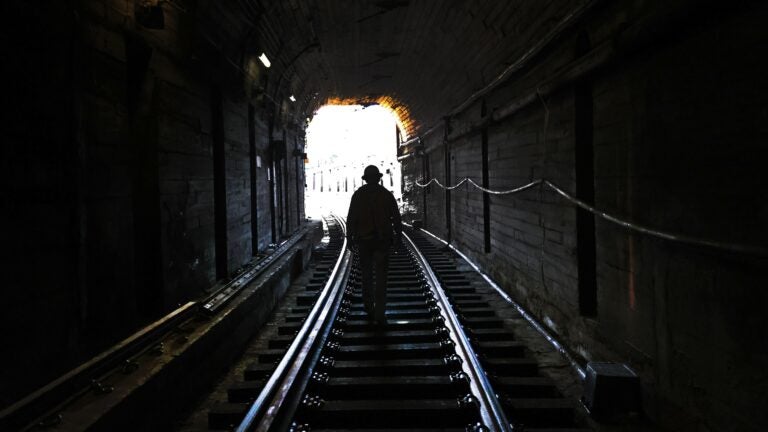Local News
The T briefly implemented systemwide speed restrictions in March after discovering insufficient documentation of track repairs.

Poorly documented procedures and a lack of clarity around some MBTA workers’ responsibilities contributed to the track safety concerns that sparked widespread speed restrictions earlier this year, according to new reports.
Released Thursday, the reports — an internal audit from the MBTA’s Safety Department and an independent review from Carlson Transport Consulting, LLC — document the systemic issues that briefly culminated in blanket speed restrictions of 10 to 25 mph across all subway lines last March.
T officials explained at the time that missing or inconsistent documentation on track repairs was to blame.
The highlights
Commissioned by the T, the Carlson report identified two main causes for the track safety issues: A “lack of complete clarity” regarding roles and responsibilities within the Maintenance of Way department, and workers who did not fully understand or fulfill their responsibilities.
Other factors included inadequate staffing, as well as limited experience and qualifications among employees, according to the report.
The internal review, meanwhile, found that the process for testing track quality and addressing defects wasn’t formalized or documented, instead relying “on knowledge being handed down from senior personnel to newer ones.”
The result: some institutional knowledge left the MBTA as prior Maintenance of Way management retired, according to the report.
“Based on the findings, the probable cause that allowed the condition of insufficient documentation to exist has been determined to be the lack of a documented process,” the report explained. “The absence of a documented process allows for many tasks to be overlooked.”
Eng: MBTA is ‘moving in the right direction’
Speaking at a press conference Thursday, MBTA General Manager Phillip Eng said the insights gained from the reports “confirm that we are moving in the right direction to address systematic problems at the agency.”
However, he also noted that the documents flag room for improvement in areas that include staffing, training, quality control oversight, and accountability.
“When you hear about the lack of information, the lack of documentation, it is not a one- or two-person issue, but it is a systemic one,” Eng said. “These reports confirm that.”
A 40-year transportation veteran, Eng said he has seen similar issues in other transit agencies.
“I think what happens in agencies is the practices and procedures have been developed over decades, and they are working until they stop working,” he said. “What has to happen, though, is that we need to continuously evolve; we need to continuously look at what we’re doing, even when we’re successful. It’s important to say, ‘How can we do better?’”
The MBTA said in a news release that it has already taken a number of steps to improve its track inspection and maintenance, including issuing a standard operating procedure for track geometry testing and enhancing training for system repairpeople.
Speaking Thursday, Eng also doubled down on the need for proper training and clear lines of communication at all levels within the MBTA.
“We are not only addressing the findings of the various reports, but we’re building an organization that I believe will be sustainable and long-lasting, building an organization that is looking both near-term and long-term,” Eng said. “And this is about ensuring that the workforce, even at the entry level, all the way to the top, have the proper training, qualifications, and clear direction from management.”
Newsletter Signup
Stay up to date on all the latest news from Boston.com